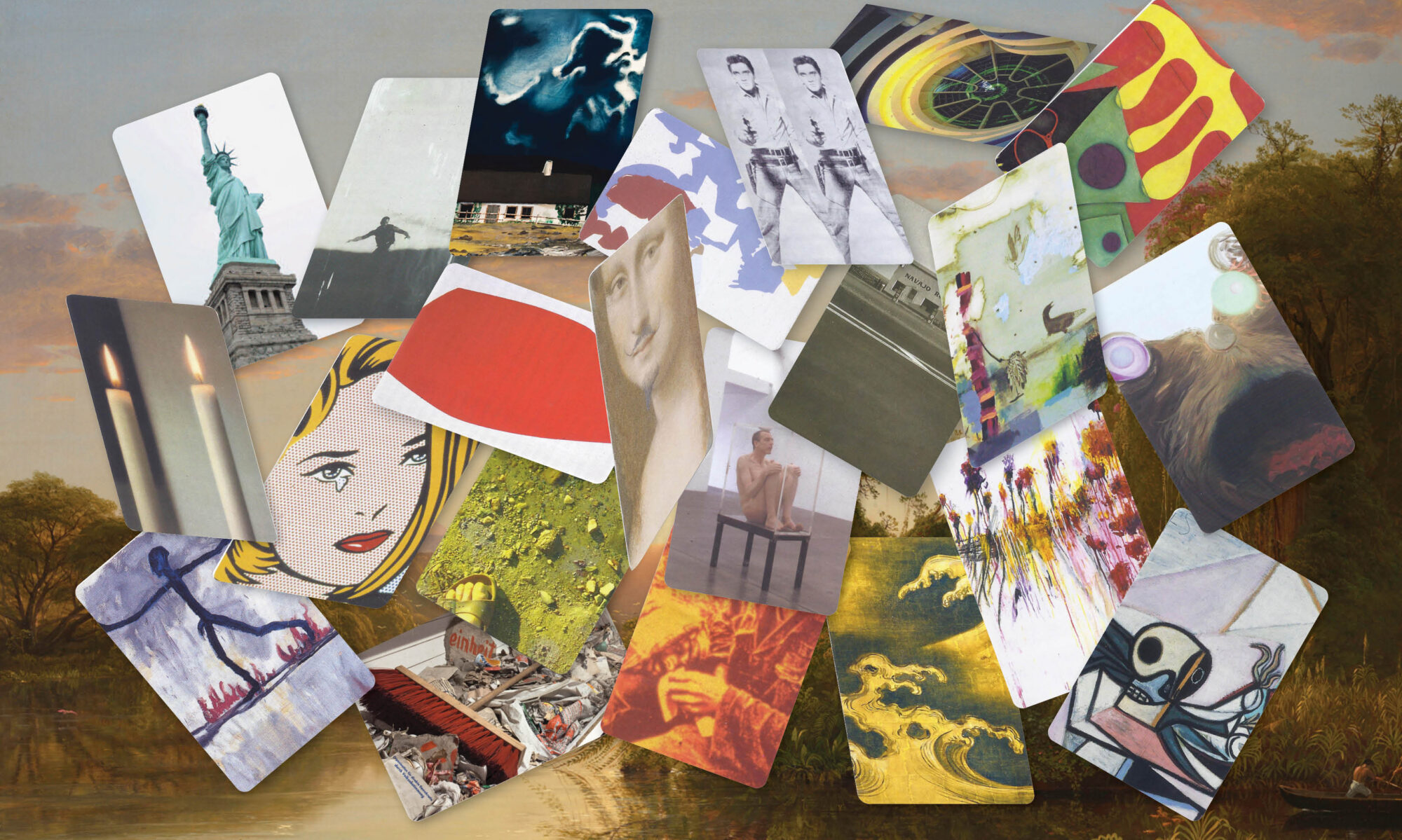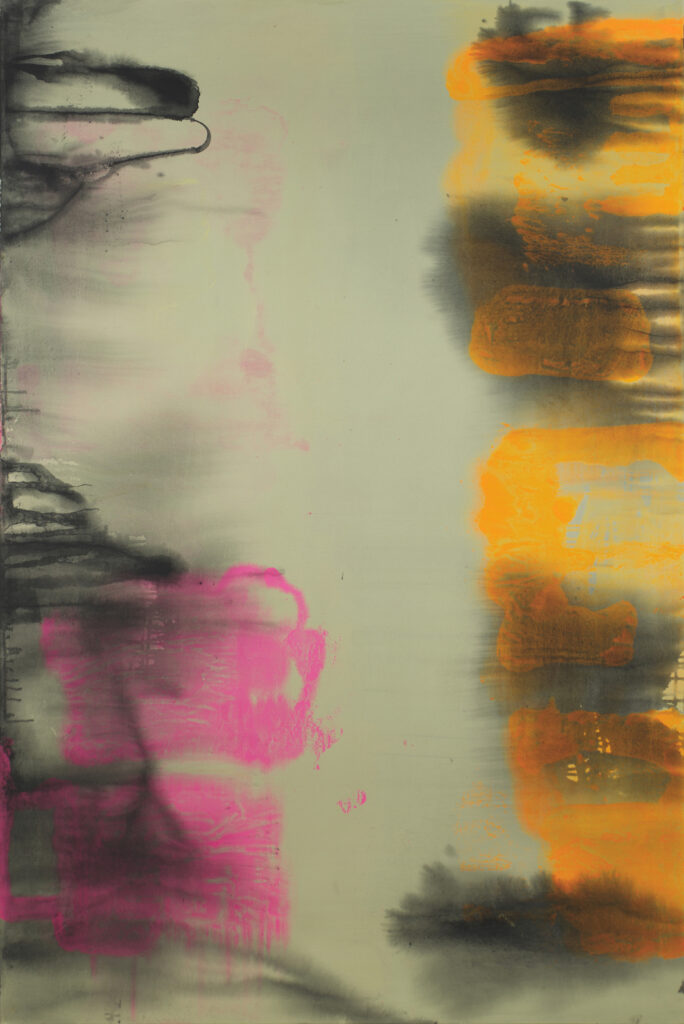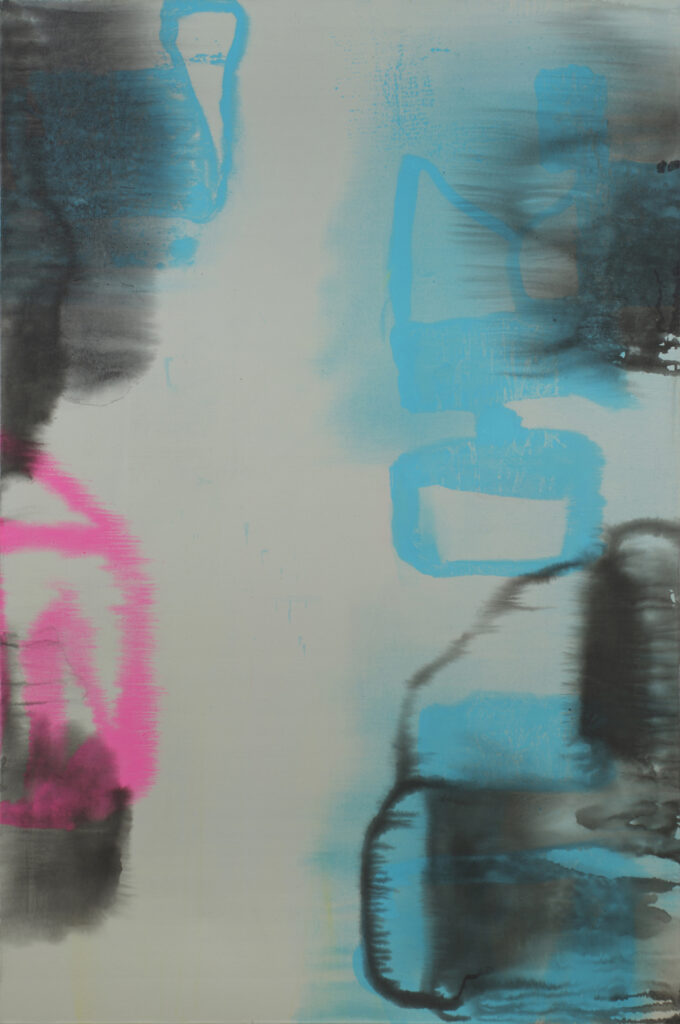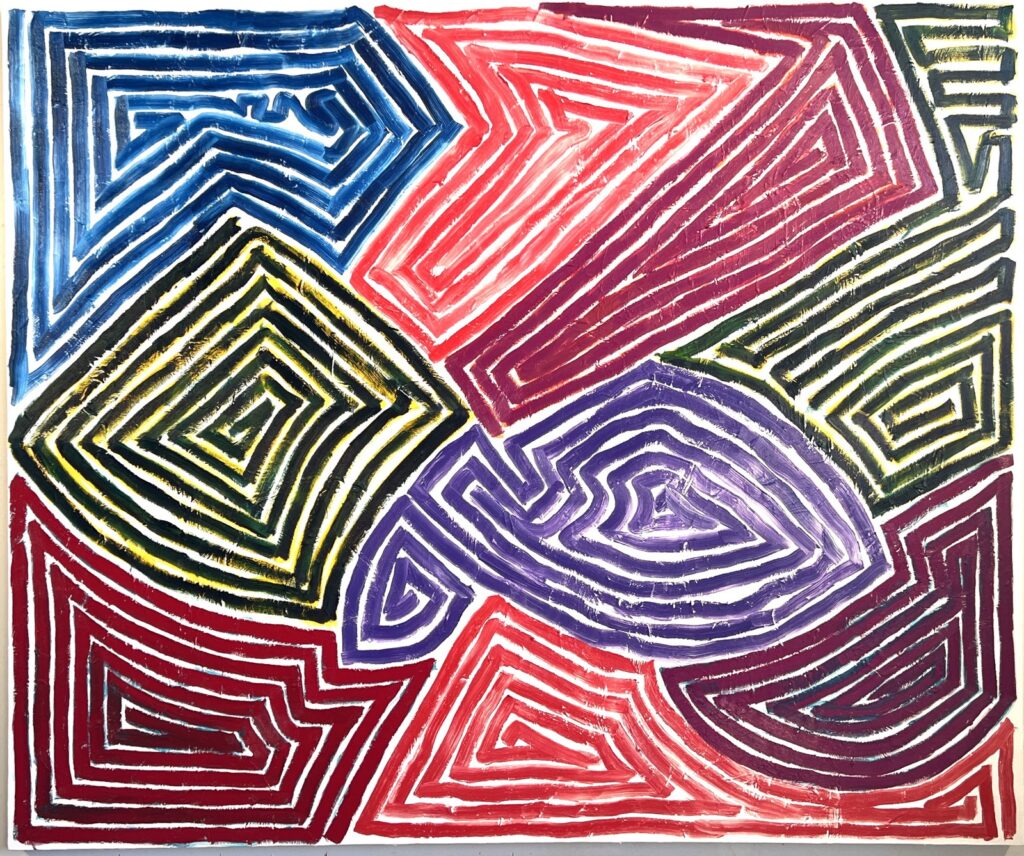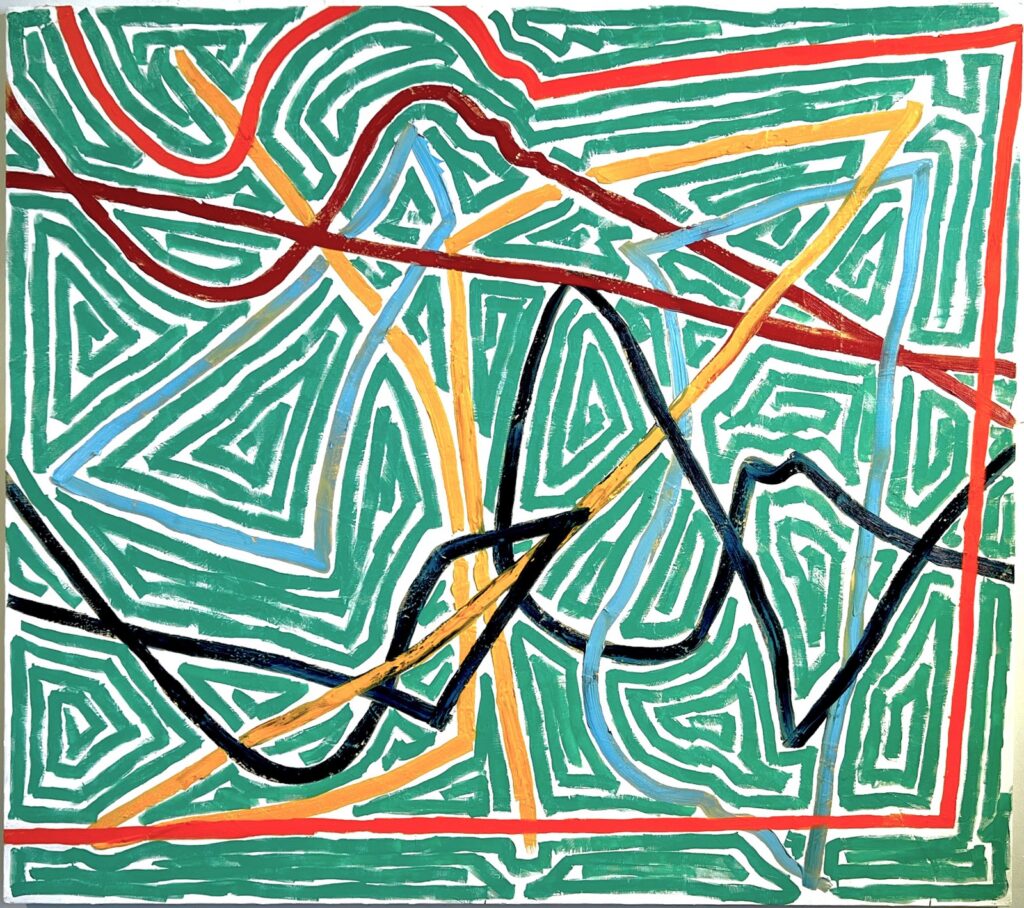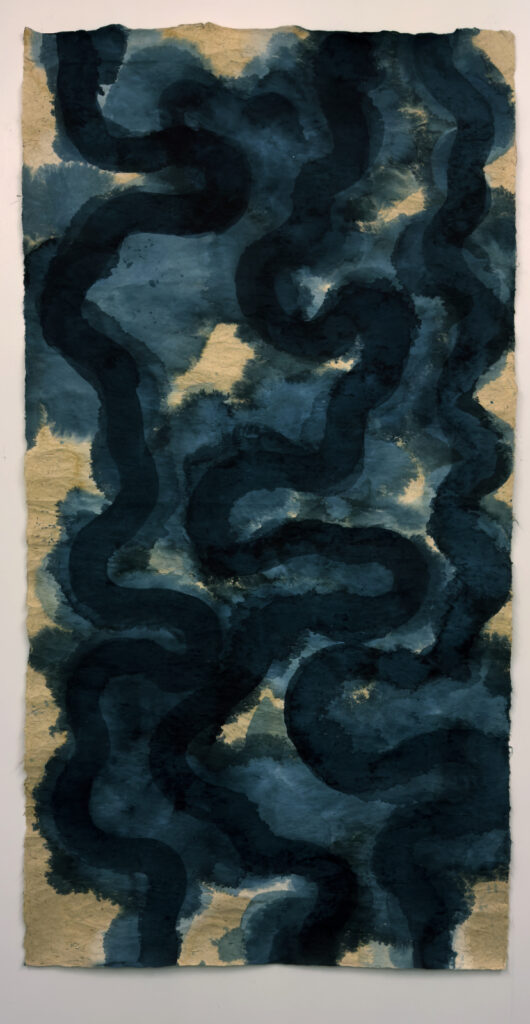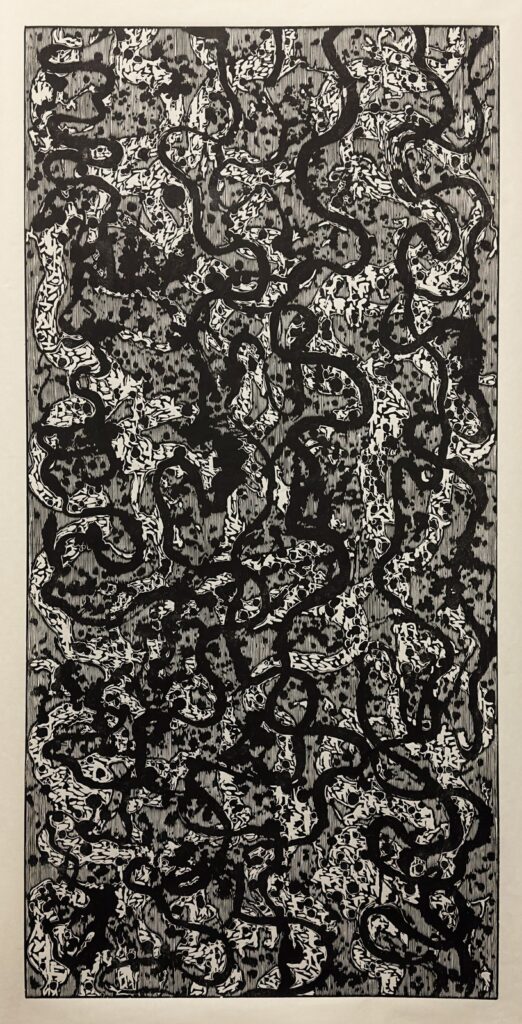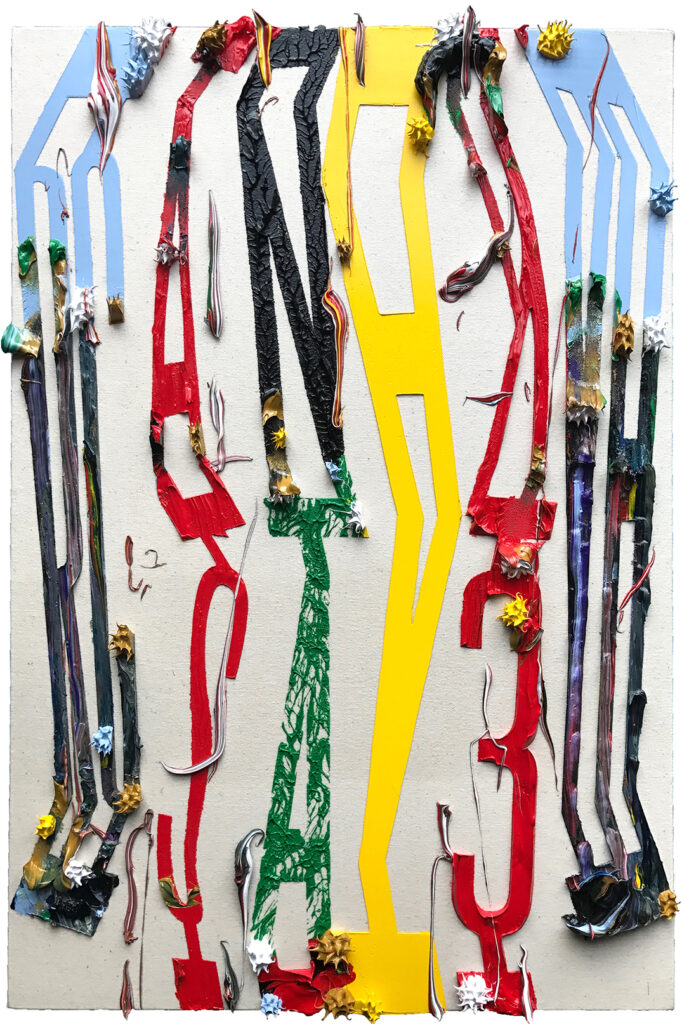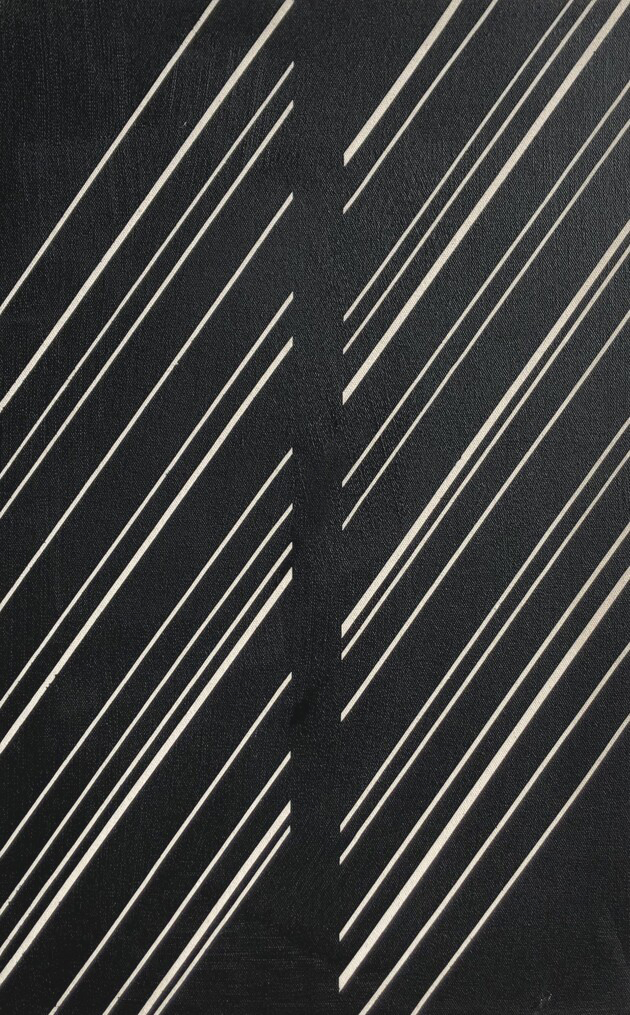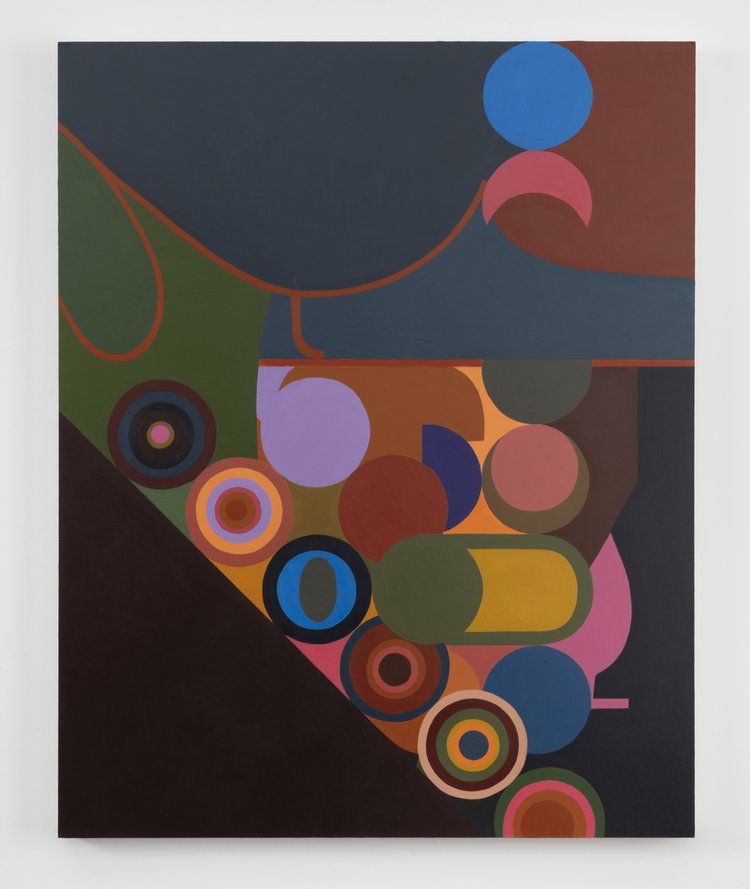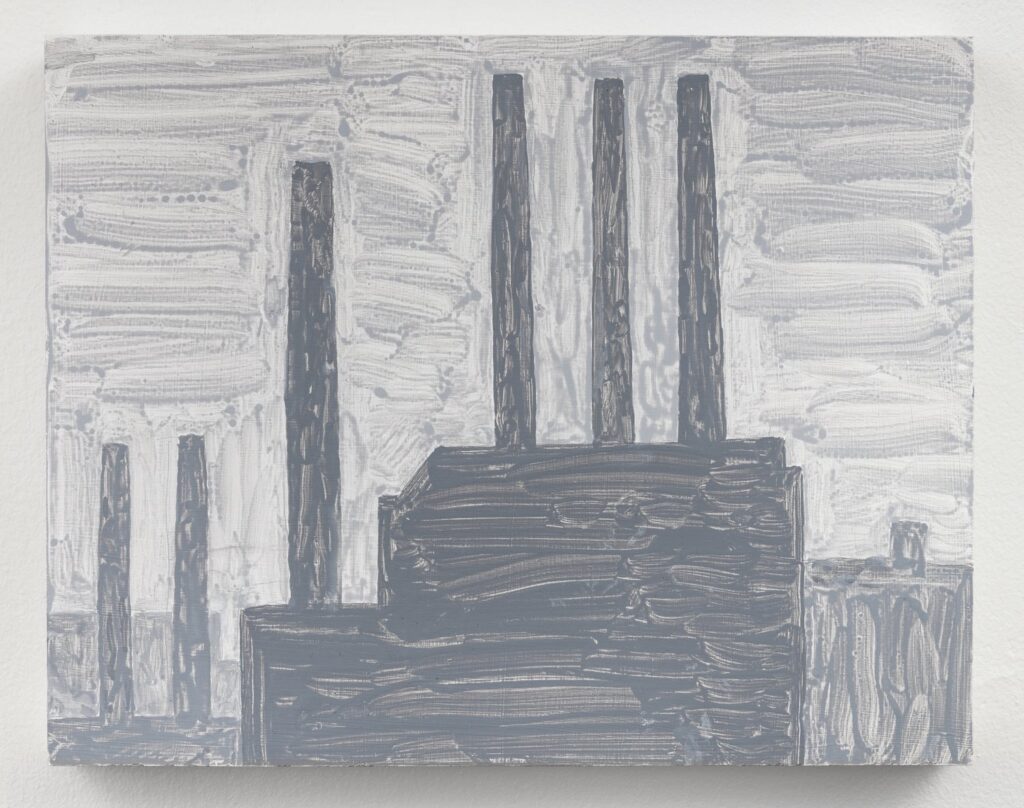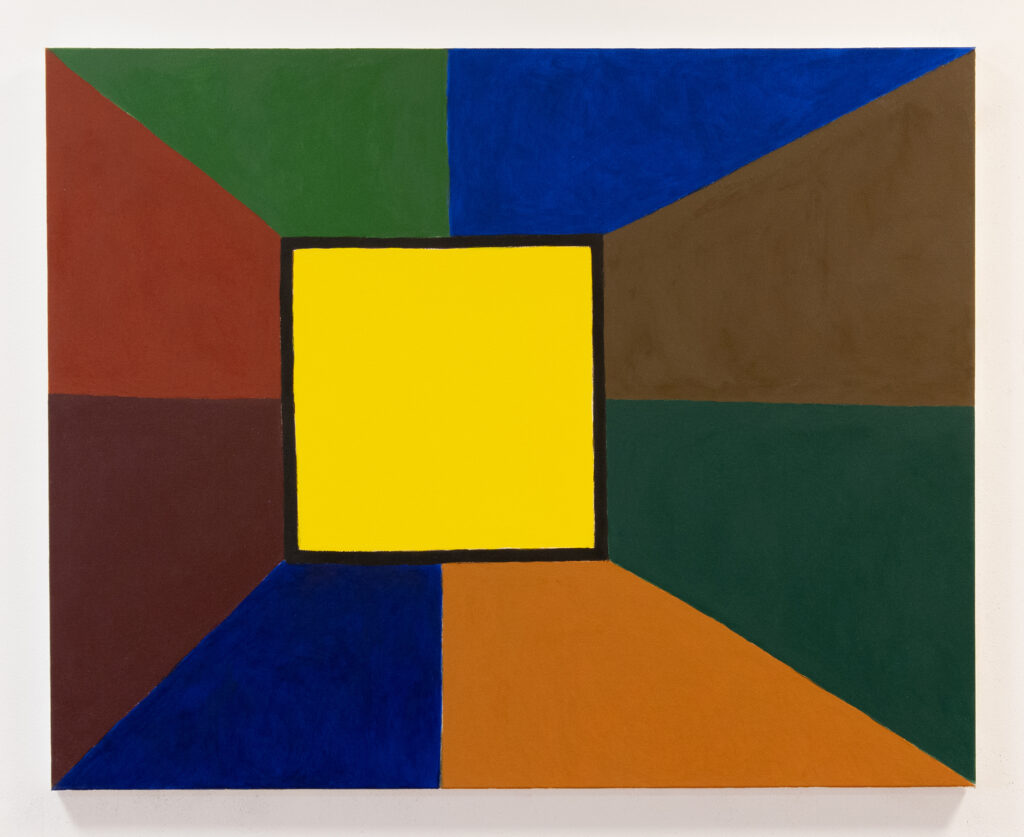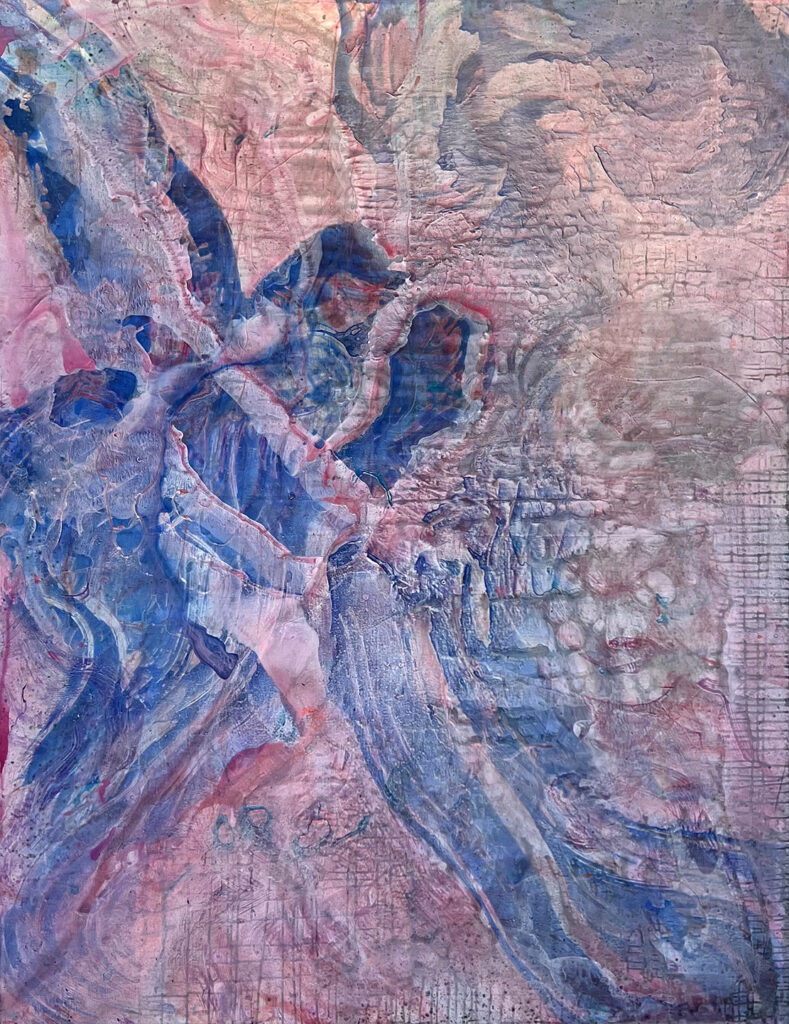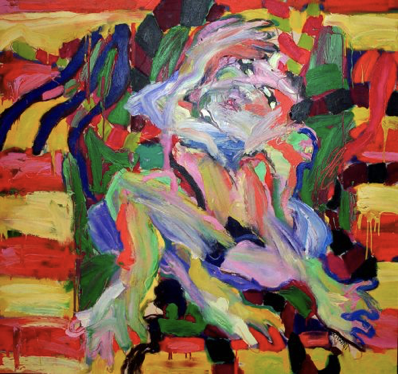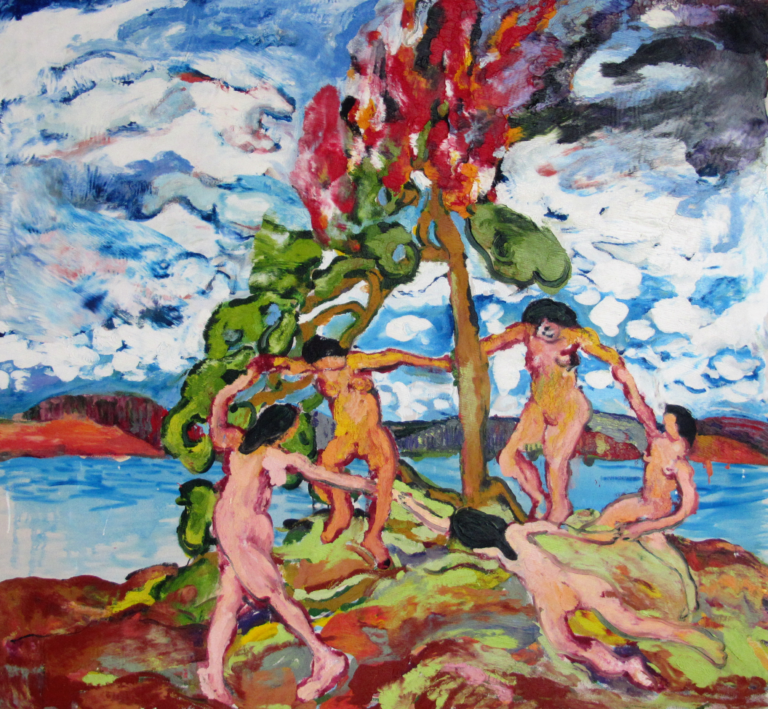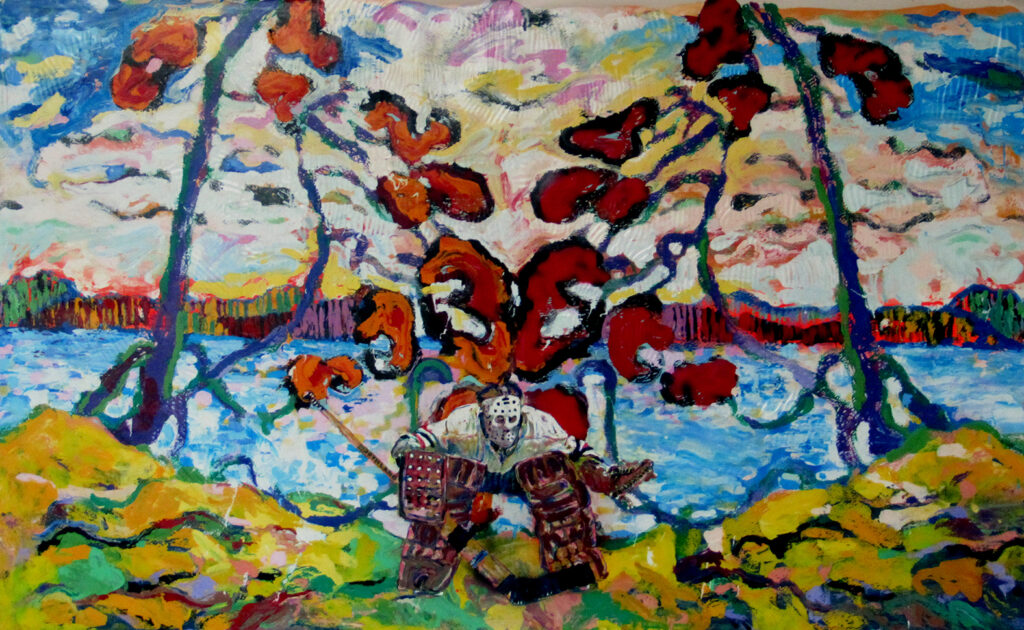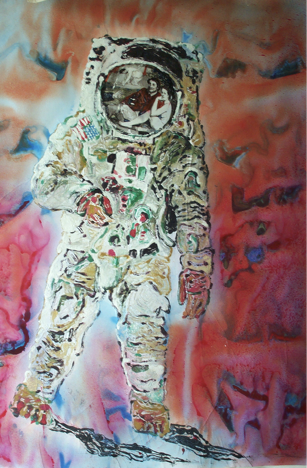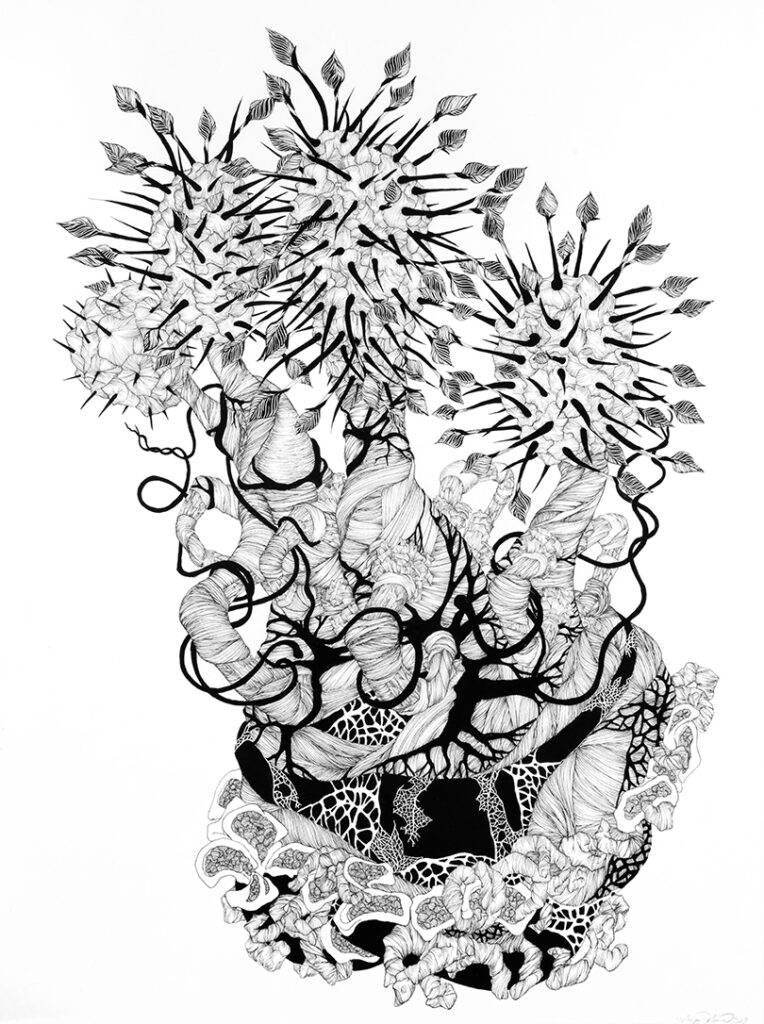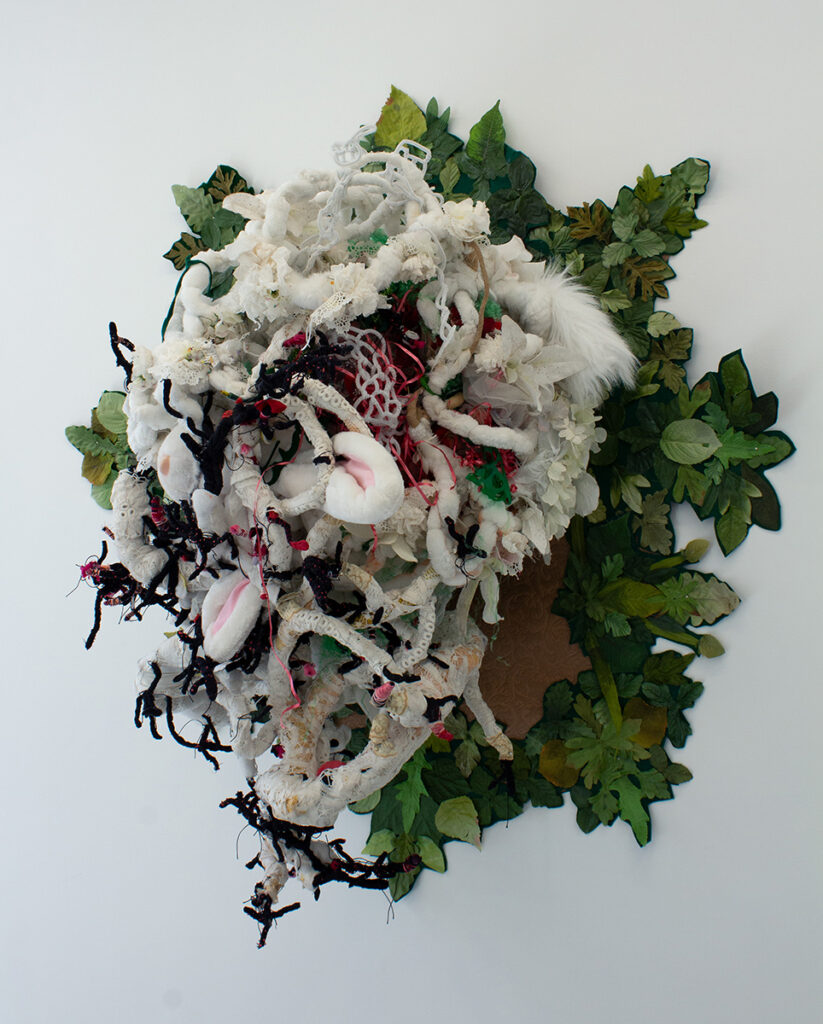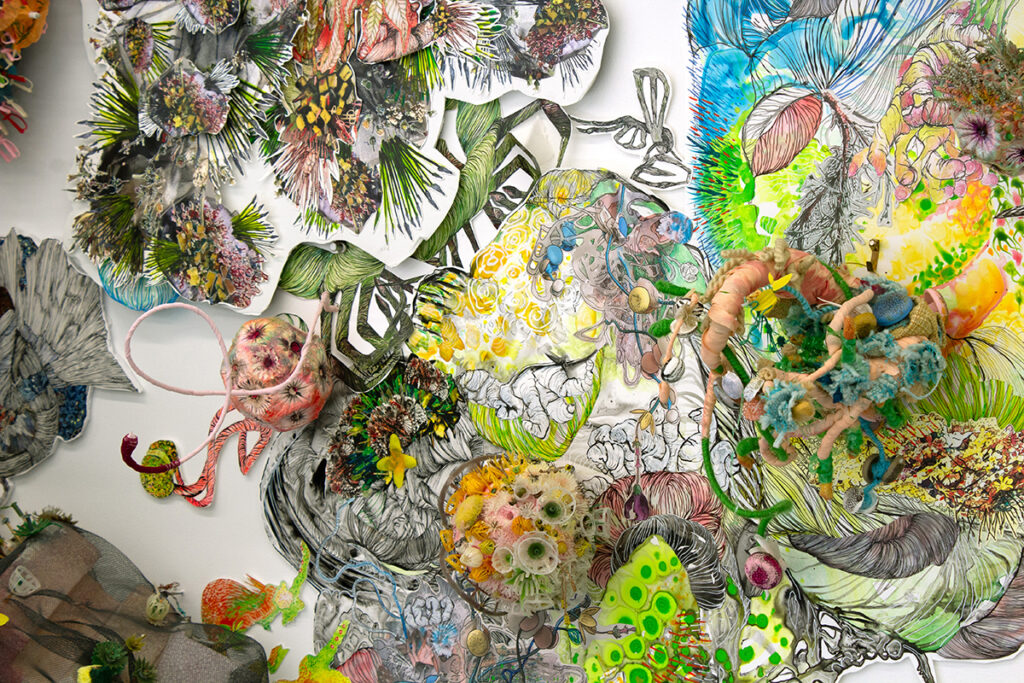by D. Dominick Lombardi
Born in Northern Ireland in 1956, the young Rodney Dickson would one day learn first hand about violence, destruction and sacrifice. “The Troubles” (1968-98) was a very dangerous time in Northern Ireland, an indelible experience for Dickson that will often tinge his art in some palpable way. Over the past several years I have come to know him as a passionate and caring individual who is always digging deeper to find meaning through his art, often expressing those findings as acute emotion through color, or the capturing of individual souls through his stirring approaches to portraiture.
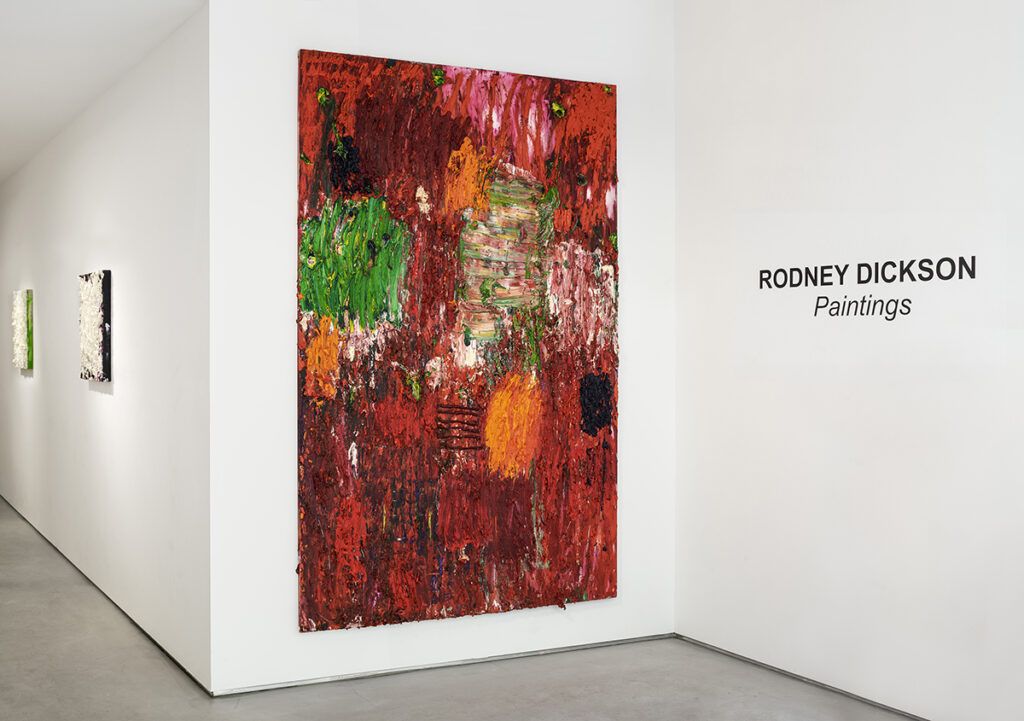
His current exhibition Rodney Dickson: Paintings at Nunu Fine Art, features those two distinctly different series. On the main, street level of the gallery are thickly painted, abstract works that attempt to defy gravity with their massive amounts of paint, as opposed to the lower level space that features numerous, overlapping, life-sized portraits of individuals that he has come to know during his times mostly in Asia, Great Britain and his home since 1997, Brooklyn, NY.
Upon first entering the gallery I was struck by the frenzy of paint applications in 17 (2023), an eight foot tall painting filled with a patchwork of colors and textures that are suggestive of rivers, rivulets, mountains and no-man’s land. Like an earth mover, Dickson pushes, scrapes, applies and piles up paint in obsessive and reactive ways churning up medium in such a frenzy that the paintings become energized and somehow personified. With this powerful physical presence and something of an implied nervous system, the residual energy in the paint twitches, ripples, and coagulates in voluminous swathes and layers that conspire for our attention. This raucousness of color and texture is balanced by the absolute boldness of technique, while the great variance in the thickness of the paint reminds us of the dynamism and focus of the artist.
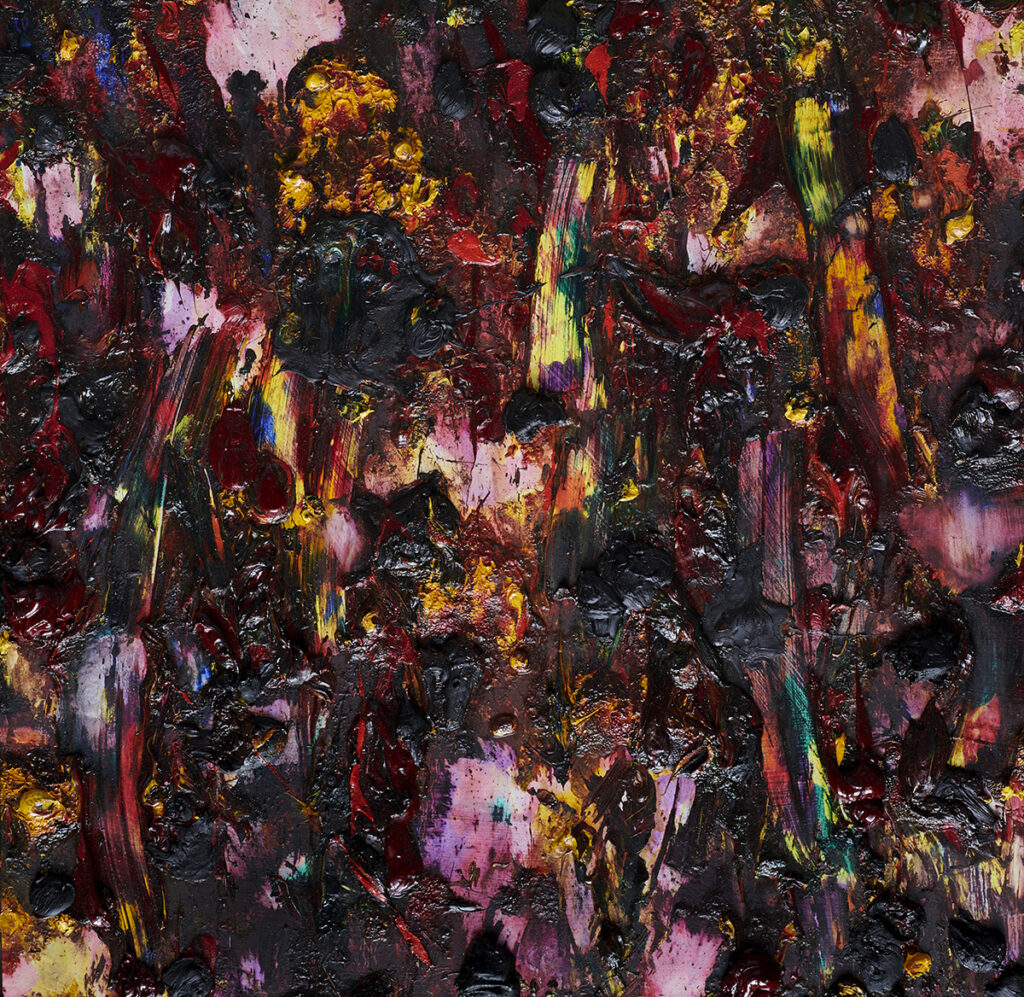
Down a hallway toward the back of the gallery hang smaller, more intimate, but no less tactile paintings that present a chorus of challenging visual crescendos. If there is one common thread throughout these smaller works, it is their general tendency of vertical movement, while some have much more disrupted, scraped areas that wrangle the downward action. In one, 17 (2020), the entire surface of heavily applied oil paint has been disturbed, giving it a more dystopian, scorched earth effect. Perhaps this in one dark memory of the aftermath of an IRA bombing close to home.
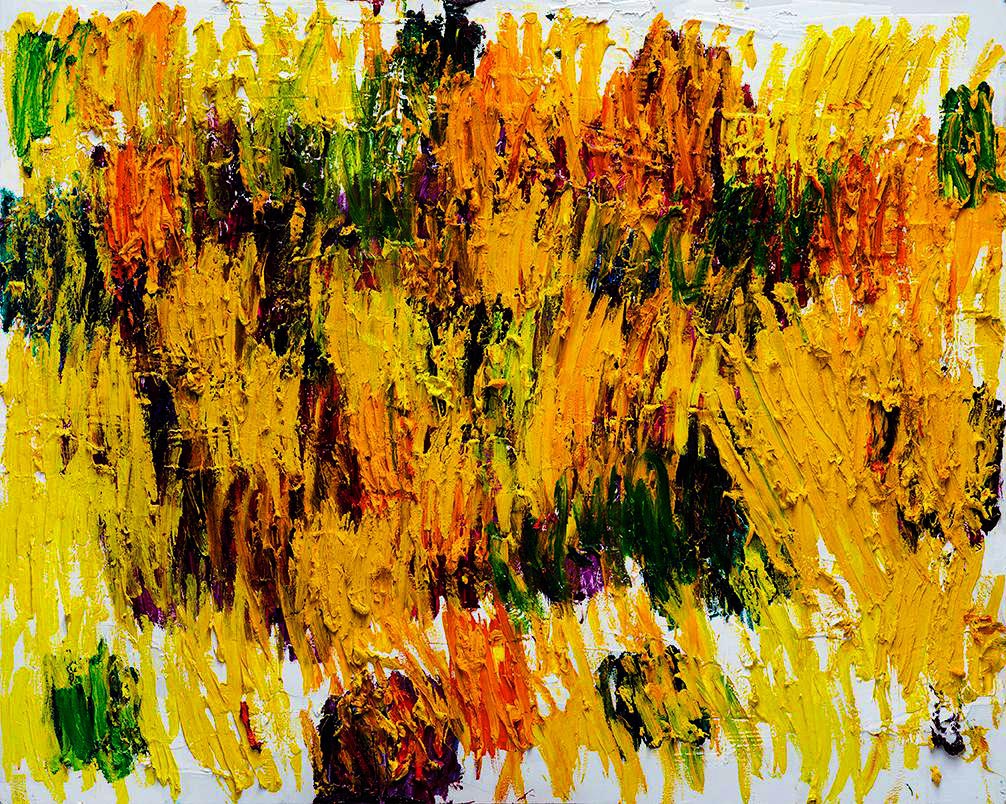
Considering all the above, I do not mean to imply there is no hope here. There is, and it is clear in some of the larger works in the big room in the rear of the gallery, where the paintings tend to give the impression of something akin to weightlessness despite the thickness of the paint. In 8 (2020), the predominantly yellow composition set horizontally suggests a landscape, a combination that may remind some of Van Gogh’s Wheat Field with Crows (1890) sans the foreboding flying silhouettes. With Dickson’s 8, it’s more about flow and how we perceive wind, how we receive visual cues and information both directly and indirectly that are right in front of us, without the addition of the minutiae that seeps in from the periphery. Dickson appears to be saying here; find a focal point depending on your immediate needs, take in the extremes and avoid the in-betweens, go back to your easels, your blank pages, your instruments or your computers and filter the flow down to something malleable and promising.
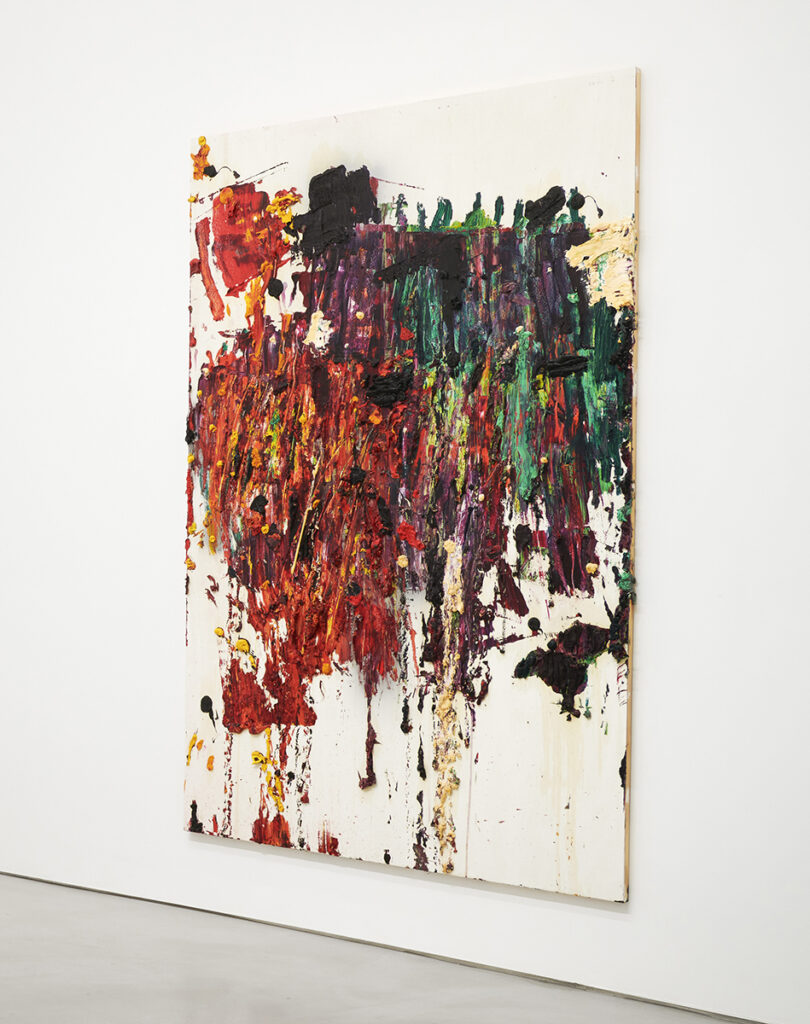
We see this awareness again in 18 (2022) where Dickson primarily pairs the color opposites of red and green, which are largely moderated by black, white and yellow, as they float atop a white ground. Some may also note here that the artist sometimes cleans his paint scraping tool on the edges of the panels, which in turn subtly defines the borders while unconsciously redirecting our attention back into the center of action. In addition to the two main combating colors, Dickson adds small dollops of white and yellow right from the business end of the paint tubes, carefully punching up certain points in the composition that tacitly draw our eye to certain points of color confrontation.
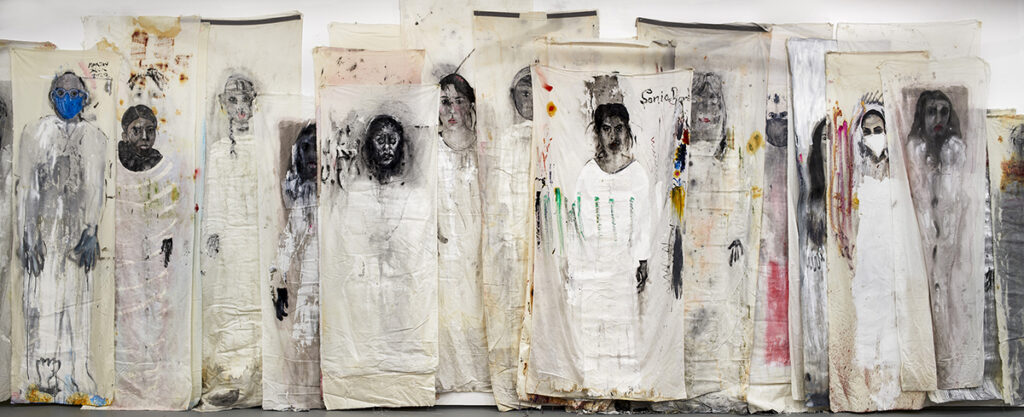
Moving down a flight of stairs to the lower level, there hangs countless mystifying representations of individuals Dickson has come to know over the years, each staring right back at us with their soulful eyes. Some portraits are buried almost entirely beneath other paintings, while a few can be seen in full view, all painted on the sheerest of fabrics. The delicacy of the material, the watered down paint, the representational subjects and the way they are installed could not be more different from the paintings on wood panel upstairs. Yet there is that same depth of meaning, the same unique sort of passion that Dickson’s work always emanates. It is a truth, an unrelenting drive to project the intensity, the fleetness and the frailty of living everyday in a world that is so rapidly changing and all too often disappointing. But the artist must find their own sort of understanding, of finding and releasing the thoughts that are the hardest to keep unspoken. This is when the magic happens and Dickson attracts and amazes us with tantalizing directness.
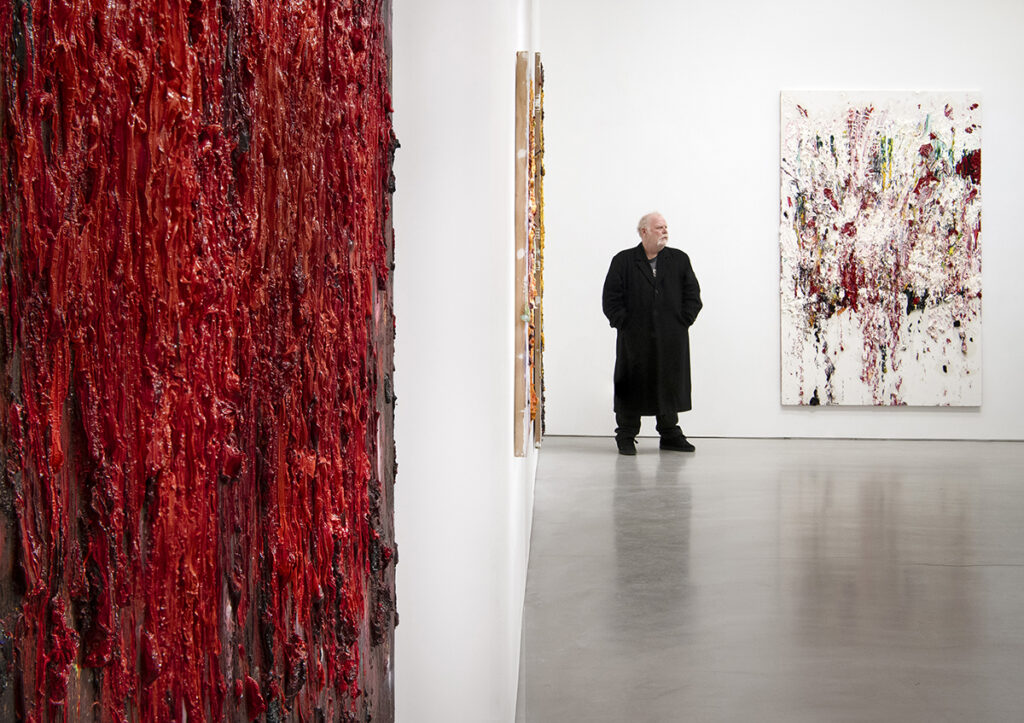
Rodney Dickson: Paintings. March 23 – June 1, 2024 at Nunu Fine Art, 381 Broome St, New York, NY 10013
